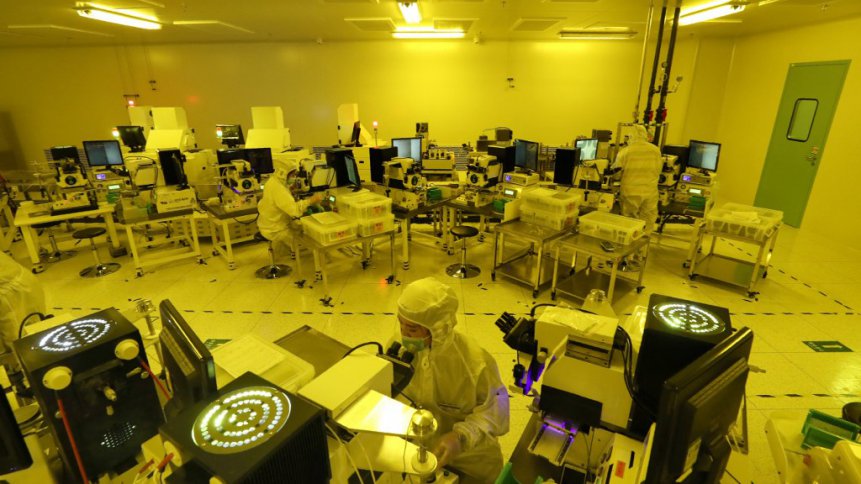Building sustainable, resilient semiconductor supply chains

Semiconductor shortages have been persistent over the past two years, caused by supply chain priorities changing as a result of the COVID-19 pandemic, and forcing major manufacturers, suppliers, and the rest of the electronics value chain to suspend production lines.
Semiconductor chips, after all, are the essential components of all supply chains in the electrical and electronics (E and E) sector – a vital backbone powering virtually any electronic device and only increasing in demand year-by-year as rapid digital transformation is converging various technologies including artificial intelligence, Internet of Things, augmented and virtual reality, autonomous machinery, and so many others.
While semiconductor supply chains have been tossed into disarray, raising serious questions about maintaining sustainable supply lines to keep up with mounting need, another kind of sustainability has been also drawing global attention. Environmental sustainability is at a tipping point, according to Ajit Manocha, the CEO of global organization SEMI, which links up thousands of firms and professionals to advance semiconductor design and build cooperation
The Importance of Sustainability
Delivering the keynote at SEMICON Southeast Asia 2022, Manocha emphasized how the “importance of sustainability and building stronger supply chains” were both critical elements of the semiconductor ecosystem – curiously, worsening climate conditions globally often have a link to the chipmaking space in particular.
For instance, when shortfalls in semiconductor supply chains first appeared in early 2020, the first cause was cited as droughts in Taiwan, which accounted for more than half of the world’s semiconductor foundry market at the time. Other environmental warning signs are also apparent, such as wildfires sparking inexplicably in California and Arizona – coincidentally, also important hotspots in the global chip chain: California being the home of Silicon Valley and chipmaking giant Intel, while Arizona is fast becoming a fab hub with numerous foundries being set up in that arid state.
Manocha, the former CEO of pure-play GlobalFoundries and chairman of the Semiconductor Industry Association, believes that the semiconductor industry is a big part of the sustainability problem – and can play a big role in being the solution. He pointed out that technologies are already playing one of the most pivotal roles in helping reduce the carbon footprint and bringing the costs of being environmentally conscious down for many businesses and industries.
Reducing Carbon Footprints
For example, the costs of producing electric vehicles have gone down sharply as production operational efficiencies have increased, meaning that EVs cost much less to make now and are much more cost-competitive with traditional combustion, gas-guzzling vehicles. Like most other electronic-dependent systems, there is an energy consumption problem in the semiconductor industry — large semiconductor fabs can consume electricity at 100 MW/hour, enough to power 50,000 houses, and leave a massive environmental footprint.
In addition, a single fab can use up to 9 million gallons of water per day, which is why water usage, along with a drought in Taiwan, could seriously set back semiconductor production and the supply chains that rely on it. Factor in 70-plus new fabs coming online over the next few years to deal with the persistent demand shortages, said Manocha, and it could spell a recipe for ecological disaster.
The SEMI CEO said that ironically, the chip industry itself will be crucial to providing answers to help address the sustainability impact. After all, most E and E companies and products run on chips, so advancements in semiconductors will be mission-critical to enable the next growth phase of Industry 4.0 smart manufacturing and other next-generation technologies that conserve water and energy, and reduce carbon footprints in the long run.
“Supply chain and ops strategies and execution models have not evolved rapidly enough to support this growth and safeguard against ‘Black Swan’ events and disruptive technology trends,” said Manocha. Black Swan events are crisis points like the pandemic and the resultant shortcomings that reverberated along global chains, semiconductor or otherwise.
The SEMI Initiative
When it comes to resiliency in supply chains themselves, SEMI and its partners have collaborated on a Sustainability Initiative to find a common way forward. Manocha says the semiconductor industry needs more innovation to show its commitment to being part of the solution.
SEMI wants to address the collective gap where the electronics supply chain community can globally identify and prioritize pressing challenges, and to that end, it will introduce the global SEMI Supply Chain Management (SCM) Initiative that will leverage SEMI’s broad industry reach to develop a platform to collectively identify and address pressing supply chain challenges, help member companies anticipate issues and risks, and proactively find solutions across the value chain.
“SEMI will support its members by defining a new vision and SCM blueprint for 2030 and beyond, to effectively anticipate and address operational challenges and rapidly escalating macro-challenges,” Manocha explained in his presentation.










